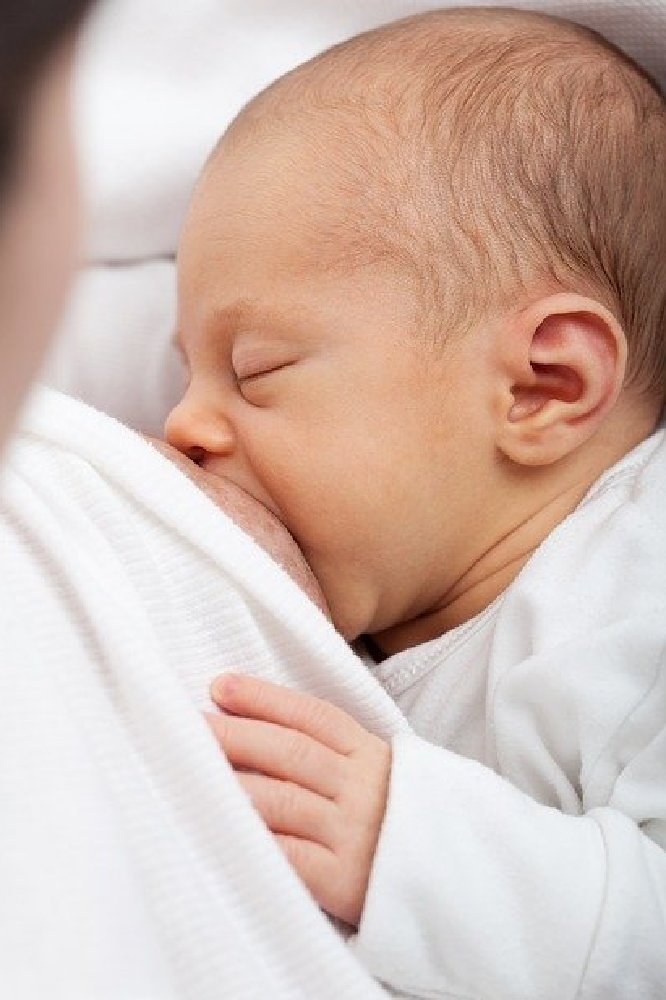Cleft lip and palate are facial differences which occur when a baby's mouth does not form properly during pregnancy. As a result, babies with clefts can often have trouble receiving the right amount of nutrients from birth – so learning how to feed them properly is key!

Image courtesy of Pixabay
To mark Cleft Awareness Month, we talked to Dr Peter Mossey, an expert in craniofacial anomalies and a Medical Advisory Board member at the international children’s cleft charity, Smile Train, to find out the top five things that you may be interested to know about breastfeeding a baby with a cleft.
A cleft lip and/or palate is formed from birth.
Dr Mossey says: Cleft lip and/or palate (which is the hard and soft roof of a baby’s mouth) are facial differences which occur when a baby's mouth does not form properly during pregnancy, leaving a gap.
More than 200,000 babies are born with a cleft lip and/or palate each year globally, which equates to around 1,200 babies in the UK alone.
However, because the NHS often carries out cleft surgery very soon after birth, many people are still unfamiliar with the condition and the long-term impact that it can have on a child’s life.
It can be difficult to breastfeed a baby with a cleft.
Dr Mossey says: Breastfeeding is often a big challenge for mothers who have given birth to a baby with a cleft, as the gap in the baby’s lip or mouth can alter their capability to latch onto the breast and suck – two vital actions that are required for breastfeeding.
Sadly, in some areas of the developing world, parents don’t have access to the expertise or quality healthcare services they require to educate and support them with their child’s nourishment.
Thankfully there are charities and organisations out there, like Smile Train, who offer Nutrition
Grants Programmes to help such families, by teaching parents how to properly feed their child and meet local health sanitisation guidelines, so that they are strong enough to receive cleft surgery, safely and successfully.
Don’t lose hope, it is possible to breastfeed.
Dr Mossey says: Lots of women see breastfeeding as an opportunity to bond and connect with their baby, in which case, the presence of a cleft lip and/or palate should not discourage you from trying – as it can be possible with some practice and persistence.
The best way to begin, is to check whether your breast can shape to fit your baby’s cleft gap – a smaller and narrower gap will mean it is easier for them to grasp hold of the breast. There will also be less space for milk and air to miss their mouth.
Once you find your rhythm and technique, it’s important to pause regularly and burp your baby, as their cleft might result in them inhaling more air as they feed.
There are other options available if you are struggling.
Dr Mossey says: If you find that breastfeeding is not working, then don’t worry – there are plenty of alternate options for you to try, which will still help you to bond with your baby. The easiest method is to express, store and manually feed your breastmilk. For example:
· Bottle feeding – A common alternative to breastfeeding is expressing breast milk into a bottle. However, like breastfeeding, there is the possibility that the opening between your baby’s mouth and nose could present some challenges – so it’s important that you pay close attention to how they react. To help, try feeding your baby in an upright position – as this can help to prevent nasal regurgitation – you can also try using a special feeding bottle to control the flow of milk out of the bottle.
· Spoon feeding – Once your baby is a bit older, you can begin feeding purees and table foods with a spoon. If you try but find that they resist the idea of spoon feeding, it could be a sign that they are not developmentally ready to take that step yet. In this case, it’s best to stop and see if they are ready in a few weeks.
· Cup feeding – Another tried and tested method - that is approved by the World Health Organisation - is to use the NIFTY Infant Feeding Cup to deliver expressed breast milk to your baby. Smile Train often uses this for feeding, as the cup’s specially designed reservoir means that babies can easily lap milk and control the pace and flow.
Breastfeeding is not the only way to bond with your baby.
Dr Mossey says: It’s important to know that breastfeeding is not the only way you can bond with your baby. Close skin contact and talking to your baby is one of the best – and easiest – ways of creating a strong connection.
From birth, your baby will notice and pick up on your emotional cues – your tone of voice, your gestures, and your emotions – and send you corresponding signals, such as crying, cooing and mimicking in reply. Therefore, holding and talking to your child often are just as beneficial in connecting with your baby as breastfeeding.
Tagged in Breastfeeding

